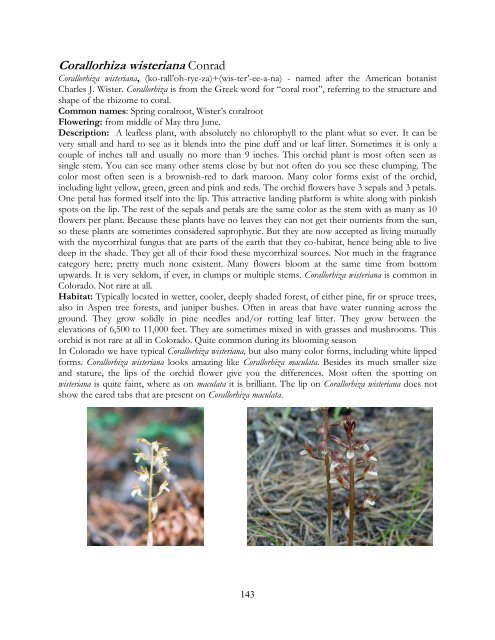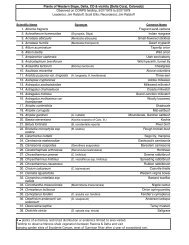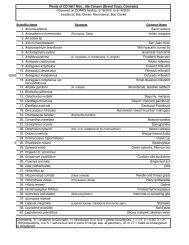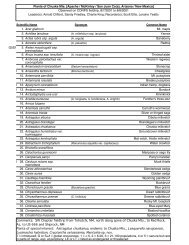Scotty Smith's Orchids of Colorado. - Southwest Colorado Wildflowers
Scotty Smith's Orchids of Colorado. - Southwest Colorado Wildflowers
Scotty Smith's Orchids of Colorado. - Southwest Colorado Wildflowers
Create successful ePaper yourself
Turn your PDF publications into a flip-book with our unique Google optimized e-Paper software.
Corallorhiza wisteriana ConradCorallorhiza wisteriana, (ko-rall‟oh-rye-za)+(wis-ter‟-ee-a-na) - named after the American botanistCharles J. Wister. Corallorhiza is from the Greek word for “coral root”, referring to the structure andshape <strong>of</strong> the rhizome to coral.Common names: Spring coralroot, Wister‟s coralrootFlowering: from middle <strong>of</strong> May thru June.Description: A leafless plant, with absolutely no chlorophyll to the plant what so ever. It can bevery small and hard to see as it blends into the pine duff and or leaf litter. Sometimes it is only acouple <strong>of</strong> inches tall and usually no more than 9 inches. This orchid plant is most <strong>of</strong>ten seen assingle stem. You can see many other stems close by but not <strong>of</strong>ten do you see these clumping. Thecolor most <strong>of</strong>ten seen is a brownish-red to dark maroon. Many color forms exist <strong>of</strong> the orchid,including light yellow, green, green and pink and reds. The orchid flowers have 3 sepals and 3 petals.One petal has formed itself into the lip. This attractive landing platform is white along with pinkishspots on the lip. The rest <strong>of</strong> the sepals and petals are the same color as the stem with as many as 10flowers per plant. Because these plants have no leaves they can not get their nutrients from the sun,so these plants are sometimes considered saprophytic. But they are now accepted as living mutuallywith the mycorrhizal fungus that are parts <strong>of</strong> the earth that they co-habitat, hence being able to livedeep in the shade. They get all <strong>of</strong> their food these mycorrhizal sources. Not much in the fragrancecategory here; pretty much none existent. Many flowers bloom at the same time from bottomupwards. It is very seldom, if ever, in clumps or multiple stems. Corallorhiza wisteriana is common in<strong>Colorado</strong>. Not rare at all.Habitat: Typically located in wetter, cooler, deeply shaded forest, <strong>of</strong> either pine, fir or spruce trees,also in Aspen tree forests, and juniper bushes. Often in areas that have water running across theground. They grow solidly in pine needles and/or rotting leaf litter. They grow between theelevations <strong>of</strong> 6,500 to 11,000 feet. They are sometimes mixed in with grasses and mushrooms. Thisorchid is not rare at all in <strong>Colorado</strong>. Quite common during its blooming seasonIn <strong>Colorado</strong> we have typical Corallorhiza wisteriana, but also many color forms, including white lippedforms. Corallorhiza wisteriana looks amazing like Corallorhiza maculata. Besides its much smaller sizeand stature, the lips <strong>of</strong> the orchid flower give you the differences. Most <strong>of</strong>ten the spotting onwisteriana is quite faint, where as on maculata it is brilliant. The lip on Corallorhiza wisteriana does notshow the eared tabs that are present on Corallorhiza maculata.143







